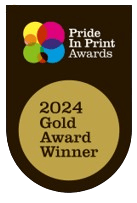Looking back at the history of Indian classical art it is well known that it was the Devadasi community which propagated the art form. One of the important rituals which was the Gita and Nrityaseva is what made the girls being attached to the temples. This concept of dedicating dancers to temples was prevalent throughout India. Not just the ritualistic aspect of the temple but in this process the art itself flourished to the great heights as the main focus was only on the seva and learning the art. The temple dancers/musicians were always considered auspicious and had high respect for the knowledge they possessed. Also, on the other hand we had the court dancers/musicians, who had to bring the best art out of them to please the king. The economic and cultural conditions of the ruling dynasty that played a very important role in propagating the art, temple and the court dancers.
It was the political & social influence which gradually changed the mindset about the art and the dancers from being considered auspicious to being shunned as outcastes due to which for many centuries the upper castes never entertained the idea of their family members learning this art. It was only after many centuries that classical dance was accepted by all. In the twentieth century when learning classical dance gradually became a part of the society two different kinds of social exclusion appeared. As learning & practicing classical dance was expensive, the middle & the lower income group of families could not encourage their children to learn dance. Secondly, for a long period even after classical dance was embraced by the upper castes, boys in those families were in fact chided & discouraged from learning classical dance as it was considered a feminine art & certainly not a career making art.
Learning classical dance was mostly confined to female artistes only, though many nattuvanars & accompanying musicians were men. Though we have many successful male gurus’ but unfortunately, even now, though not to the higher extent as before, yet the male artists are questioned. Matter of fact being that the male is always being associated for being the financial umbrella for the family, the question about sustenance with art is still prevalent. Above said is also valid to an extent because during earlier times it was the Kings or patrons who supported the artist. In the current times when one choses art as a profession then the support from the government/ patrons is needed if the society wants to preserve the art. This way the artists can devote ample time to practise, preserve and promote their art without making it a part time. It is the people and the community responsible for the development of society. Though the world is developing at a higher rate, the progress is still insignificant especially when it comes to art acceptance as a profession/career. Social exclusions exist in the form of lack of work, lack of opportunities, inequalities and others which is seen in many spheres of human activity since time immemorial & across geographical boundaries. And, yes, classical art too, is not spared of this malady. Social exclusion of any kind in any sphere of activity is not to be entertained nor encouraged because that would deprive a deserving & talented individual of realising his or her potential thereby causing a loss to the healthy development of the society at large.-: Rashmi Thapar
Rashmi Thapar is Auckland based
Bharatnatyam Exponent Bharatanatyam Dancer



